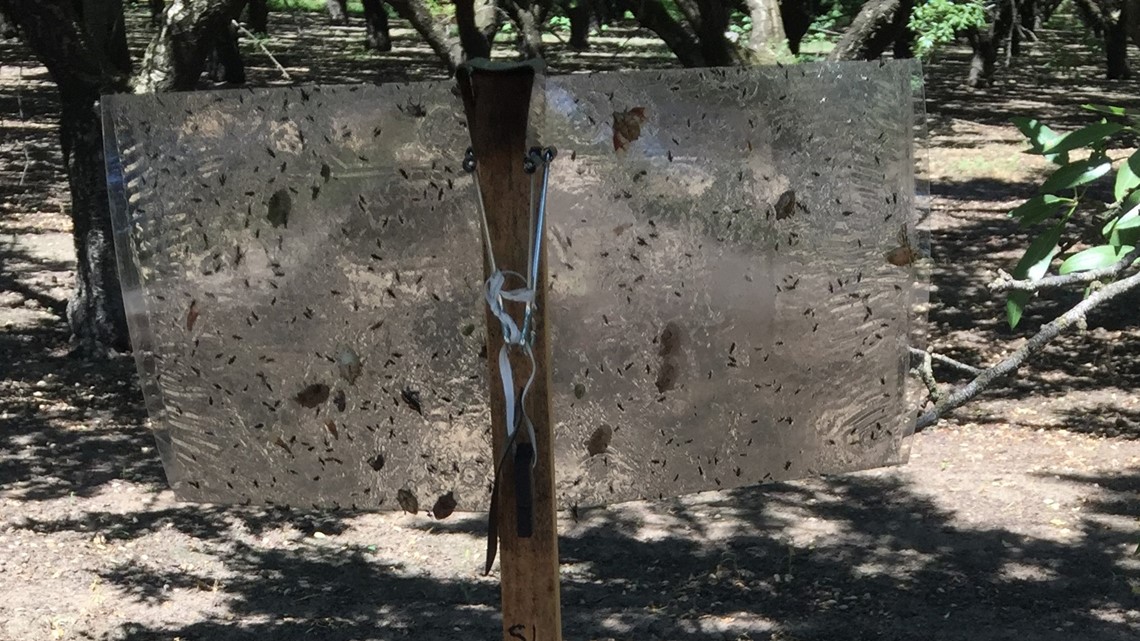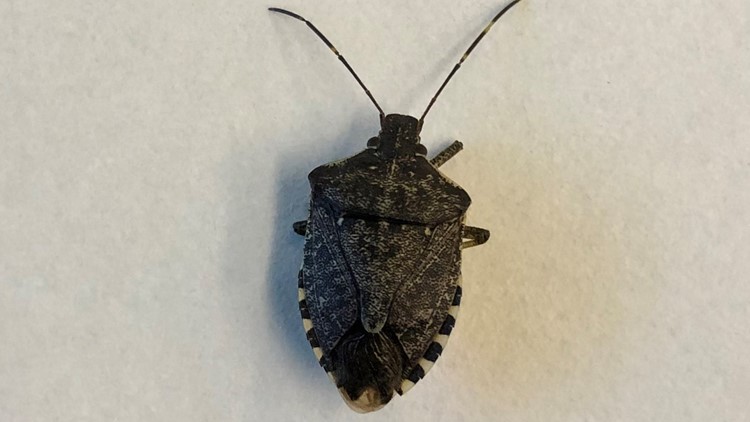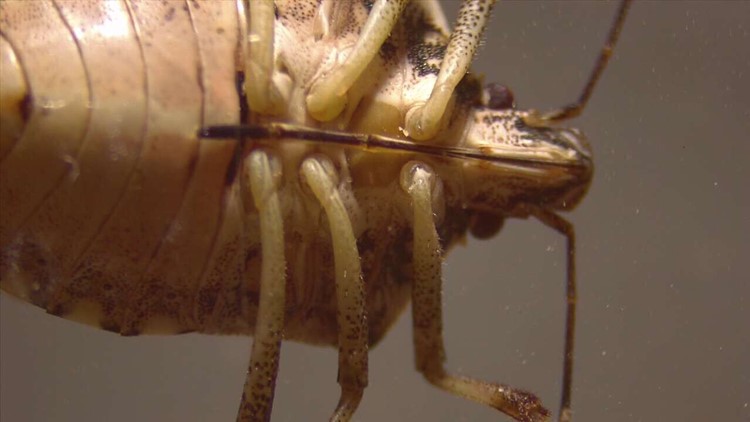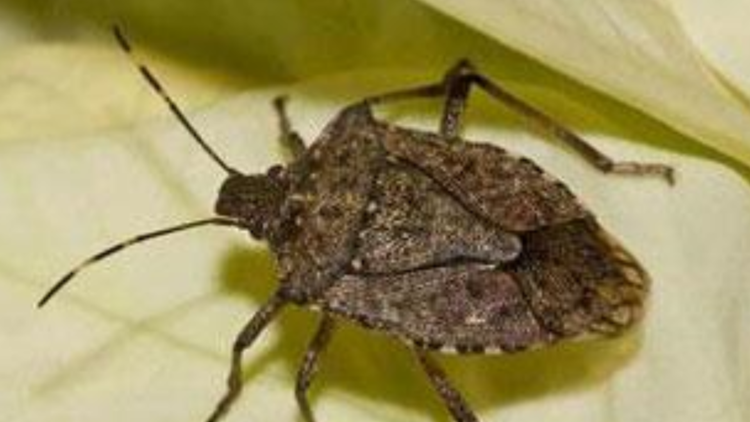STANISLAUS COUNTY, Calif. — A stink bug in your home might be annoying for you and the bug, but a stink bug in an orchard is more akin to a feeding frenzy.
Adding to problems like tariffs and trade negotiations, almond and peach farmers in Stanislaus County are now being asked to keep an eye out for a stink bug that’s been making its way to the agriculture scene.
The Brown Marmorated Stink Bug's [BMSB] population is in the early stages, but it’s a problem researchers and officials are looking at because it's been snacking on two of the county's top crops. In Stanislaus County, peaches are a $50 million crop and almonds are almost $1 billion, according to the county's 2017 crop report.
“In the past two to three years, we’re seeing more and more orchards – peaches and almonds – have damage on those orchards, and we’re finding the BMSB on those orchards,” Jhalendra Rijal, an IPM Advisor for the U.C. Cooperative Extension, said. "Because of that, it’s becoming more and more concerning."
This bug causes damage by using its straw-like mouth to pierce a peach or almond. It dissolves the fruit’s tissue and then eats the juice from the fruit.


This bug causes damage by using its straw-like mouth to pierce a peach or almond. It dissolves the fruit’s tissue and then eats the juice from the fruit. The fruit is still edible after being fed on by the stink bug, but that fruit loses its marketability.
In other words, it’s edible but ugly.
Photos: Brown Marmorated Stink Bugs in Stanislaus County
Don't pack a pest
The Brown Marmorated Stink Bug is a pest from eastern Asia that the EPA believes got here in the 1990s, after possibly stowing away on a shipping container. Since it arrived, it has slowly made it's way to the west coast.
“The first commercial orchards infested in the state were found here in our county [in 2016],” Milton O’Haire, Stanislaus County Agriculture Commissioner, said. “They were found in a peach orchard over by Empire, and now they’re finding it in almonds.”
So far, the bug has been seen in Delhi, urban areas of Modesto, and even in Turlock, where it caused an entire row of almonds to drop from the trees before they were ready.


“We have been finding damage on those orchards too, and some of the peach orchards also,” Rijal said. “It’s not just the one orchard that we’re finding – it’s multiple peach and almond orchards where we see the damage. Again, it’s still the isolated case. It’s not widespread everywhere.
“It’s an early stage right now, but it could be a big problem, so we need to be open to the discussion and having the research that we need to do in order to manage this insect."
O'Haire is no stranger to foreign bugs causing a commotion in the county. The county has had their share of pests ranging from the Japanese Beetle and Mediterranean Fruit Fly to the Red Imported Fire Ant and the Gypsy Moth.
There's roughly 5,000 traps in the county looking for exotic pests at any given time, but most of those aren't in the agricultural areas.
“To me, a big emphasis for us… is that the insects that come into our state that damage our agriculture, they’re not brought in by the farming industry normally. It’s usually just by everyday citizens,” O'Haire said. “If you’re coming to California, don’t pack a pest because it has a huge impact on our agriculture here. We’re constantly trying to keep pests out of here."
RELATED:
What do you do about it?
There’s still a bit to learn about this bug. The EPA says there are few effective pesticides that are labeled for use against it, and researchers are still looking into ways to control the species.
Rijal said researchers are currently trying to figure out whether there are insecticides and products in use that can control the population.
However, another method being explored is the use of a beneficial insect that would curb the population, the Japanese Samurai Wasp.
The wasp would lay eggs on the stink bug eggs and basically destroy them. Even though Rijal says it’s the best option, there’s still studies that need to be done about its impact before a step like that is taken.
With the bug still in early stages, the UC extension is recommending traps to see whether the bug is presenting itself. Even though it’s being seen in agricultural areas and enjoys snacking on some important crops, that doesn’t mean it’s time to panic.


“Growers need to be on the lookout and see whether the population presents into their orchard," Rijal said. "That’s what we recommend at this point.”
WATCH ALSO:







